We Are Living Heritage and We Share World Heritage
Published: 19 July 2023
Read about Hope Wang's participatory action research initiative that seeks to actively involve individuals with refugee or asylum backgrounds in three World Heritage Sites (WHSs). Through several creative co-creation workshops, designed based on Worldview theory and tailored to meet participants' needs and the nature of the WHSs, the project aims to contribute to heritage education and refugees' cultural rights. Join us!
By Hsiao-Chiang Wang (Hope)
The concept of World Heritage Sites extends beyond mere definitions: it contributes to people's worldviews and holds profound significance for refugee integration. In 2022, following my participation in the UNESCO RILA Spring School, I embarked on designing my PhD research project entitled "Co-creating the Values of World Heritage Sites with Refugees: A World View Perspective." I am now excited to launch the "We Are Living Heritage and We Share World Heritage" project which will run from 2023 to 2025. In this post, I briefly introduce the aims, approaches, and plans of this project. More importantly, I invite you to join us!
Website: https://sites.google.com/view/we-share-world-heritage/home
Join Now Google Form: https://forms.gle/CHoFceThSe4Tv6b49
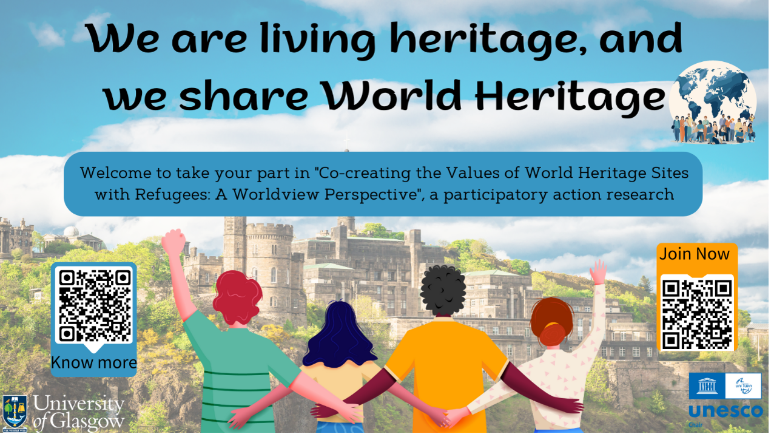
Fig 1: We Are Living Heritage and We Share World Heritage. Source: Hope Wang
What is the Purpose and Scope
What is this project all about, and what is its purpose? It is a participatory action research initiative that seeks to actively involve individuals with refugee or asylum backgrounds in three World Heritage Sites (WHSs). Through several creative co-creation workshops, designed based on Worldview theory and tailored to meet participants' needs and the nature of the WHSs, the project aims to contribute to heritage education and refugees' cultural rights. By establishing trusting partnerships and engagement zones within and beyond heritage sites, we will provide guidance for heritage management and broaden integration approaches through the co-creation of contemporary heritage values.
Why is it important to undertake this project right here and now? To address this question, I would like to outline three key points. Firstly, why focus on World Heritage Sites? WHSs possess outstanding universal values and belong to all, serving as meaningful places for communication, and self-discovery, and fostering a sense of belonging.
Secondly, why involve refugees in this project? Refugees are entitled to cultural rights and bring with them diverse multicultural backgrounds and creativity, yet often face multiple social and cultural deprivation. By making heritage inclusive for refugees, we can create an inclusive environment within WHSs that benefits everyone.
Lastly, why launch this project in Scotland? The UK government has established a comprehensive value-based world heritage system, and Scotland has embraced a New Scots refugee integration policy. Additionally, organizations such as UNESCO RILA, Scottish Refugee Council, Migrant Voice, and numerous groups support migrants and refugees. Together, we can pave the way for future actions and collaborations.
How to achieve the goal?
So, how do we plan to achieve our goals? The project's conceptual framework rests on four pillars: the Worldview Transformative framework, Critical Heritage and Engagement practice, Participatory Creative Methods, and Refugee Integration principles.
Pillar 1: Worldview Transformative framework
Worldview theory (Kearney, 1984) plays a crucial role in the learning and integration process, functioning as an integrator, it allows individuals to organize and systematize their perceptions, acquire new knowledge and skills, integrate into new communities, and contribute diverse ideas. In this project, I have designed a worldview transformative framework to be applied in heritage education.
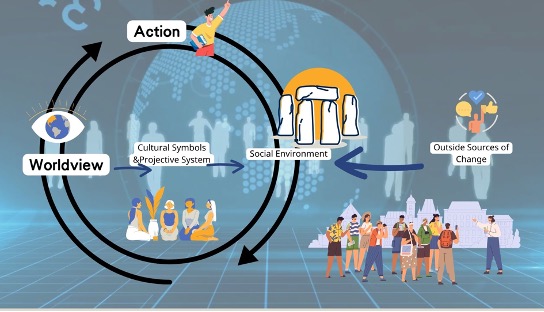
Fig 2: Worldview Transformative Framework. Source: Hope Wang
Pillar 2: Critical Heritage and Engagement Practice
Critical Heritage Studies (CHS) challenge the elite and Western-centric biases prevalent in authoritative heritage discourse, creating space for community participation and diverse voices (Smith, 2006, 2022; Waterton, 2010). Increasingly, heritage projects emphasize individuals' emotions, memories, and identities. CHS offers an alternative definition of heritage and paves the way for engaging heritage practices. Drawing from previous research on critical heritage and engagement practice, I have developed a values framework that demonstrates the multiple roles heritage plays in our society: as evidence of the past, as a sign connecting to tradition, as a service to educate or entertain, and as a catalyst for societal change.
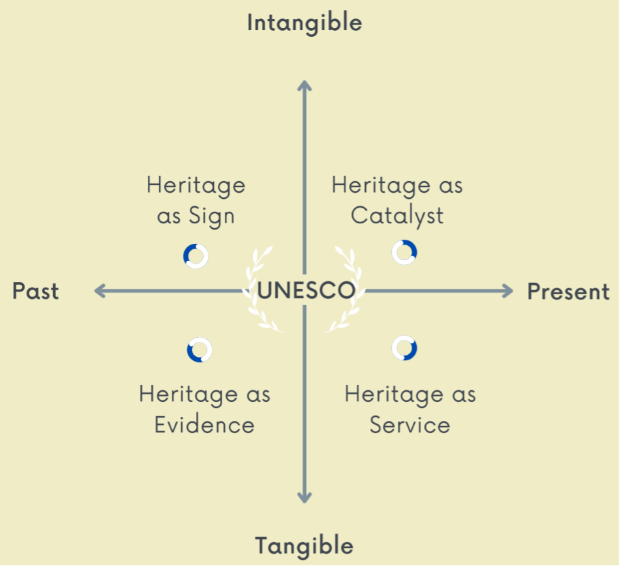
Fig 3: Heritage Values Framework. Source: Hope Wang
Pillar 3: Participatory action research and Creative Methods
This project employs Participatory Action Research, ensuring that the research is conducted with and for people rather than on people. The action cycle encompasses planning, taking action, observation, and evaluation.
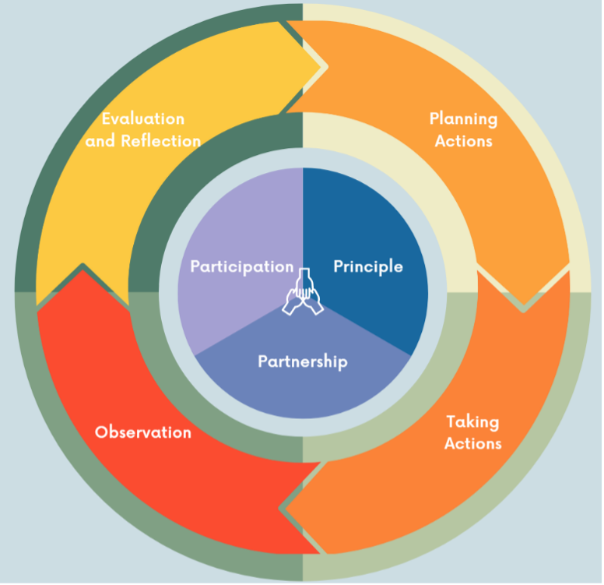
Fig 4: Participatory Action Research. Source: Hope Wang
Additionally, creativity plays a vital role in the creation of heritage values. I propose a value hierarchy that emphasizes individuals' creations, originating from emotions, imagination, and creative ideas. These creations are imbued with unique viewpoints and the creator's positionality, leading to interpretation. Through representation and diverse interpretations presented via various media, WHSs can influence people's worldviews. Ultimately, these influences contribute to fostering a sense of belonging, and identity formation, and facilitating social change—becoming the contemporary values of WHSs.
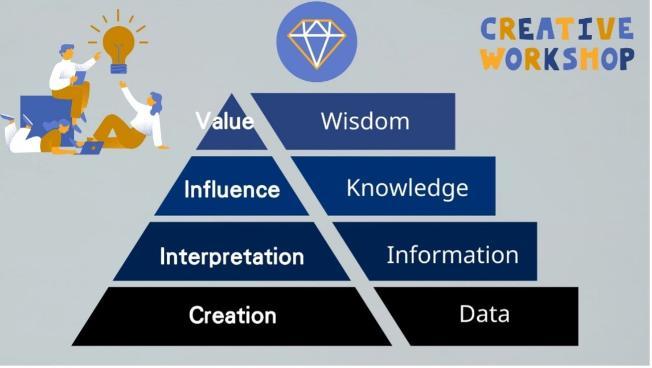
Fig 5: The value creation of heritage. Source: Hope Wang
Pillar 4: Refugee Integration Principles
Lastly, Refugee Integration Principles in New Scots refugee policy (Phipps, Aldegheri and Fisher, 2022), such as community learning, peace-building, and conflict transformation, ensure that this project is conducted ethically, and effectively, and provides benefits to all participants.
Building upon these four pillars, this project will focus on three World Heritage Sites in Scotland: The Antonine Wall, The Old and New Towns of Edinburgh, and the Heart of Neolithic Orkney. We expect to collaborate with various museums, heritage institutions, and refugee organizations. The project will feature engaging workshops, including storytelling, photovoice, and digital heritage elicitation, designed to pique participants' interest.
Who should participate?
We are looking for people who are eager to share knowledge and engage in collective learning. Specifically, we invite people with refugee or asylum background living in Scotland to join us. We also welcome collaboration from professionals in the heritage sector. Your valuable contribution will help us build an inclusive heritage education platform and foster a multicultural society.
Together, let us embrace and celebrate our shared living heritage, making World Heritage Sites accessible and meaningful for all.
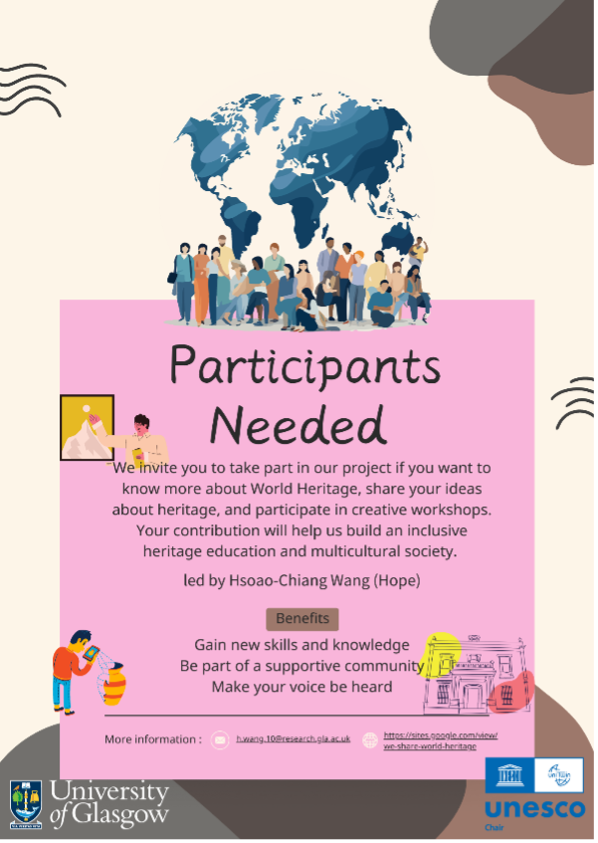
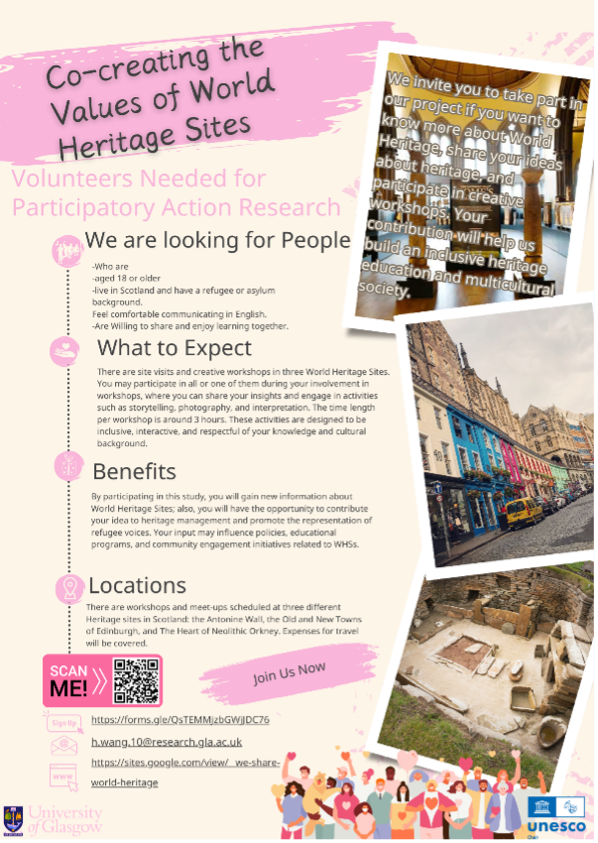
Website: https://sites.google.com/view/we-share-world-heritage/home
Join Now Google Form: https://forms.gle/CHoFceThSe4Tv6b49
References
Kearney, M. (1984) World view. Novato, Calif: Chandler & Sharp (Chandler & Sharp publications in anthropology and related fields).
Phipps, A., Aldegheri, E. and Fisher, D. (2022) The New Scots Refugee Integration Strategy: a report on the local and international dimensions of integrating refugees in Scotland. Research Reports or Papers. University of Glasgow. Available at: https://eprints.gla.ac.uk/286354/ (Accessed: 25 December 2022).
Smith, L. (2006) Uses of Heritage. 1st ed. Routledge. Available at: https://doi.org/10.4324/9780203602263.
Smith, L. (2022) ‘Heritage, the power of the past, and the politics of (mis)recognition’, Journal for the Theory of Social Behaviour, 52(4), p. 623. Available at: https://www.academia.edu/82674776/Heritage_the_power_of_the_past_and_the_politics_of_mis_recognition (Accessed: 19 December 2022).
Waterton, E. (2010) Politics, policy and the discourses of heritage in Britain. Houndmills, Basingstoke, Hampshire ; New York: Palgrave Macmillan.
First published: 19 July 2023
Go to the project website
Sign up through the Google form

